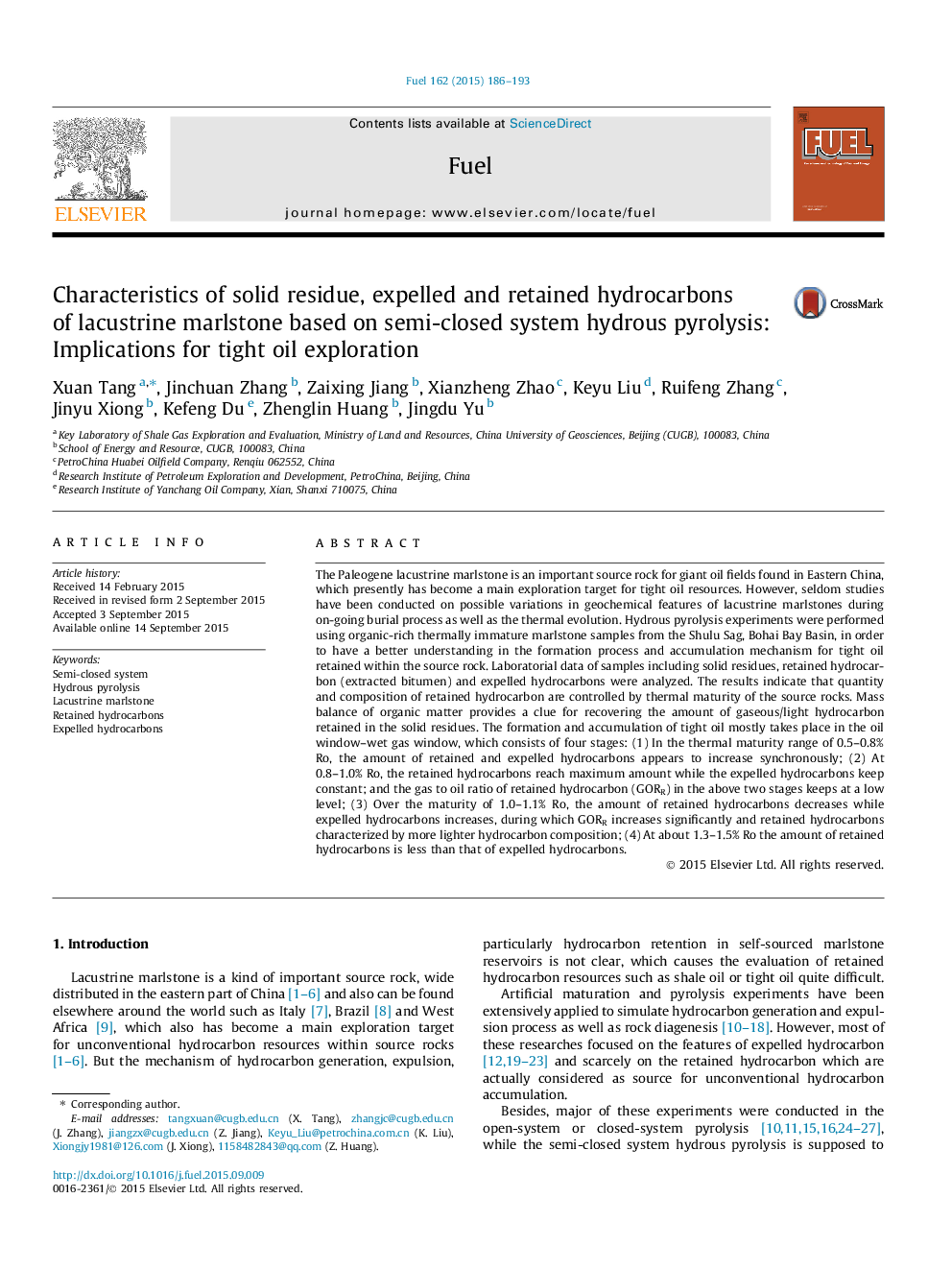| کد مقاله | کد نشریه | سال انتشار | مقاله انگلیسی | نسخه تمام متن |
|---|---|---|---|---|
| 6634458 | 461108 | 2015 | 8 صفحه PDF | دانلود رایگان |
عنوان انگلیسی مقاله ISI
Characteristics of solid residue, expelled and retained hydrocarbons of lacustrine marlstone based on semi-closed system hydrous pyrolysis: Implications for tight oil exploration
ترجمه فارسی عنوان
ویژگی های باقی مانده جامد، هیدروکربن های اخراج شده و حفظ شده از مارلستان سنگ لاکستون بر اساس سیستم نیمه بسته سیستم ائرولیز آبی: اثرات اکتشاف نفت تنگ
دانلود مقاله + سفارش ترجمه
دانلود مقاله ISI انگلیسی
رایگان برای ایرانیان
کلمات کلیدی
سیستم نیمه بسته پیرولیز هیدروژنی، مارلستان سنگ لاشه، هیدروکربن های ذخیره شده، هیدروکربن های اخراج شده،
موضوعات مرتبط
مهندسی و علوم پایه
مهندسی شیمی
مهندسی شیمی (عمومی)
چکیده انگلیسی
The Paleogene lacustrine marlstone is an important source rock for giant oil fields found in Eastern China, which presently has become a main exploration target for tight oil resources. However, seldom studies have been conducted on possible variations in geochemical features of lacustrine marlstones during on-going burial process as well as the thermal evolution. Hydrous pyrolysis experiments were performed using organic-rich thermally immature marlstone samples from the Shulu Sag, Bohai Bay Basin, in order to have a better understanding in the formation process and accumulation mechanism for tight oil retained within the source rock. Laboratorial data of samples including solid residues, retained hydrocarbon (extracted bitumen) and expelled hydrocarbons were analyzed. The results indicate that quantity and composition of retained hydrocarbon are controlled by thermal maturity of the source rocks. Mass balance of organic matter provides a clue for recovering the amount of gaseous/light hydrocarbon retained in the solid residues. The formation and accumulation of tight oil mostly takes place in the oil window-wet gas window, which consists of four stages: (1) In the thermal maturity range of 0.5-0.8% Ro, the amount of retained and expelled hydrocarbons appears to increase synchronously; (2) At 0.8-1.0% Ro, the retained hydrocarbons reach maximum amount while the expelled hydrocarbons keep constant; and the gas to oil ratio of retained hydrocarbon (GORR) in the above two stages keeps at a low level; (3) Over the maturity of 1.0-1.1% Ro, the amount of retained hydrocarbons decreases while expelled hydrocarbons increases, during which GORR increases significantly and retained hydrocarbons characterized by more lighter hydrocarbon composition; (4) At about 1.3-1.5% Ro the amount of retained hydrocarbons is less than that of expelled hydrocarbons.
ناشر
Database: Elsevier - ScienceDirect (ساینس دایرکت)
Journal: Fuel - Volume 162, 15 December 2015, Pages 186-193
Journal: Fuel - Volume 162, 15 December 2015, Pages 186-193
نویسندگان
Xuan Tang, Jinchuan Zhang, Zaixing Jiang, Xianzheng Zhao, Keyu Liu, Ruifeng Zhang, Jinyu Xiong, Kefeng Du, Zhenglin Huang, Jingdu Yu,
